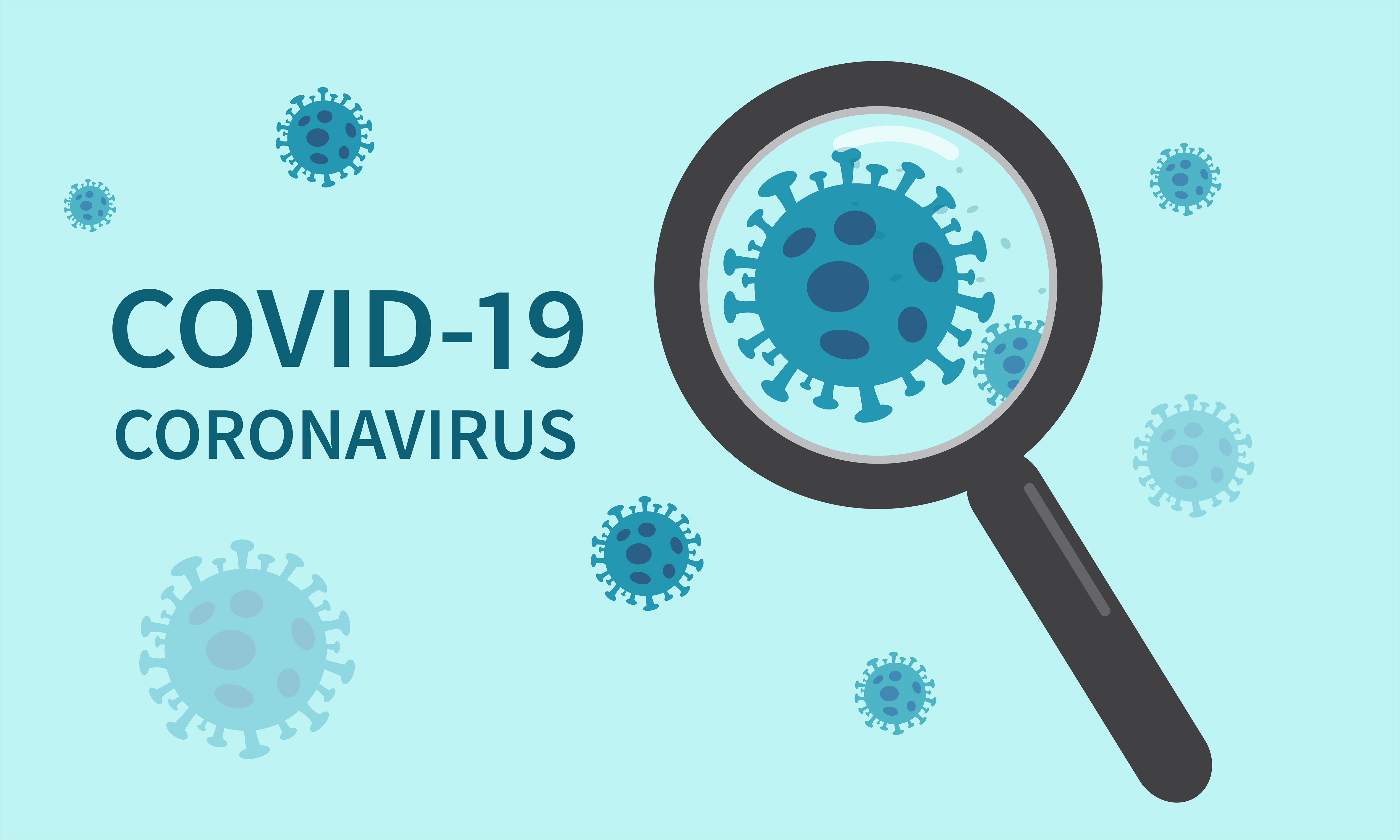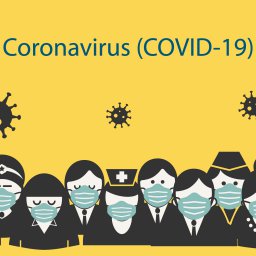
Hypertension is one of the most concerning risk factors for severe illness due to COVID-19. According to one set of data, 30% of patients hospitalized with COVID-19 have hypertension, while 12.1% have diabetes.1 And, overall, the presence of hypertension as a co-morbidity is associated with a 2.5-fold higher risk of dying due to COVID-19.2 Globally, more than 1 out of every 4 adults have hypertension, and the number increases to 1 out of every 3 adults in the United States.3, 4 Therefore, it is not surprising that 30% of patients hospitalized with COVID-19 have hypertension, but there does appear to be a correlation between the presence of hypertension and a worse disease outcome. While correlation does not necessarily imply a causal relationship, and since neither a vaccine nor a reliable treatment yet exists for COVID-19, a focus on risk factor reduction to prevent severe illness could be advantageous, especially if the underlying cause(s) of a risk factor can be determined and addressed.
One underlying, though not well-known, cause of hypertension is intestinal dysbiosis. Hypertension is also associated with gastrointestinal (GI) inflammation and increased intestinal permeability.5 Research studies have determined that those with hypertension have a gut microbiome that is distinctly different from those who do not have hypertension. Based on the findings of Yan et al., Klebsiella, Clostridium, Streptococcus, Parabacteroides, Eggerthella, and Salmonella are more frequently distributed in the hypertensive gut when compared to normal controls, while Faecalibacterium, Roseburia, and Synergistetes are present in higher amounts in healthy controls.6 Another study observed a significant decrease in the presence of bacteria from the Bifidobacterium genus in subjects with hypertension.5
Researchers have investigated both fecal transplants and supplementation with probiotics as interventions to reduce high blood pressure (BP) and to further explore dysbiosis as an underlying cause of hypertension. In two animal studies, Durgan et al. demonstrated that the transplant of dysbiotic fecal material from hypertensive rats to normotensive rats led to increased BP in the normal rats.7, 8 A similar study confirmed this finding, also noting that transplant of healthy fecal material from normotensive rats to hypertensive rats led to a reduction in BP of the hypertensive rats.9
Probiotic supplementation in humans appears to be a budding treatment for hypertension based on the antihypertensive effects noted in clinical research studies. According to a meta-analysis of nine randomized trials, probiotic supplementation was associated with a significant decrease in both systolic and diastolic BP in patients who consumed a daily dose of ≥1011 CFU of probiotic organisms for at least 8 weeks.10 Supplementation with more than one probiotic organism was significantly more effective at lowering BP than supplementation with a single organism.10, 11 And, while more research is required to determine the most effective probiotic organisms for blood pressure management, some studies have highlighted specific beneficial organisms such as Lactobacillus plantarum. According to a recent systematic review and meta-analysis, even single strain supplements of Lactobacillus plantarum effectively reduced both systolic and diastolic BP, especially in patients with hypertension.12
While the body of evidence correlating an unhealthy GI tract with a diagnosis of hypertension continues to grow, there is also preliminary evidence that the presence of GI symptoms may contribute to worse outcomes in patients with COVID-19. Studies show that COVID-19 cases with GI symptoms tend to result in a longer hospital stay, are more severe, and have increased mortality when compared to cases with no GI symptoms.13 Since a healthy gut is critical for reduction of risk factors as well as optimal immune system function, a thorough assessment of the GI tract is a clinically expedient option to reduce the likelihood of severe COVID-19 illness.
DiagnosTechs offers several comprehensive GI Health Panels, including the GI-1xC and the GI-2xC, to help you gain insight into the possible underlying causes of sub-optimal GI function, the status of the microbiome, and the presence of GI inflammation.
The GI-1xC, also known as the Regular GI Health Panel with GP3x and Calprotectin, includes the following tests:
- Ova and parasites, two samples, pooled
- Stool culture for yeast
- Expanded bacterial stool culture, enteric pathogens, with complete aerobic identification
- The expanded bacterial stool culture (GP3x) is a complete aerobic culture that reports all of the bacterial colonies isolated on the culture plates, rather than simply the most dominant species as reported on our standard GP3 results. The culture and identification methods for the GP3x are comparable to the GP3, with the additional MALDI-TOF identification of all isolated bacterial colonies.
- Campylobacter antigen
- Shiga toxin
- Clostridium difficile toxins A & B
- Giardia lamblia antigen
- Cryptosporidium antigen
- Total intestinal sIgA
- Lysozyme
- Alpha 1-antichymotrypsin
- Calprotectin
- Chymotrypsin
- Occult blood
- Fecal pH
- Helicobacter pylori Ab IgG (saliva)
- Entamoeba histolytica Ab sIgA (saliva)
- Gluten (gliadin) Ab sIgA (saliva)
The GI-2xC, also known as the Expanded GI Health Panel with GP3x and Calprotectin, includes all tests listed above on GI-1xC plus the following additional saliva tests:
- Toxoplasma gondii Ab sIgA
- Ascaris lumbricoides (roundworm) Ab sIgA
- Trichinella spiralis Ab sIgA
- Taenia solium (tapeworm) Ab sIgA
- Milk (casein) Ab sIgA
- Soy (protein) Ab sIgA
- Egg (ovalbumin) Ab sIgA
If you have questions about the tests we offer, appropriate tests for a specific patient, interpretation of test results, and/or treatment options, the physicians in our Medical Support Department are available to answer your questions. Simply call 1-800-878-3787 and a customer service representative will schedule your physician consultation.
We also offer numerous resources online including webinars, interpretation guidelines, treatment considerations and more! DiagnosTechs providers may log in to access these resources on the Provider Tools webpage in their Provider Portal.
References:
- Zhang J, Dong X, Cao Y, et al. Characteristics of 140 patients infected with SARS-CoV-2 in Wuhan, China [published online ahead of print February 19, 2020]. Allergy. doi: 10.1111/all.14238.
- Lippi G, Wong J, Henry B. Hypertension and its severity or mortality in Coronavirus Disease 2019 (COVID-19): a pooled analysis [published online ahead of print March 31, 2020]. Pol Arch Intern Med. doi: 10.20452/pamw.15272.
- FastStats – Hypertension. Centers for Disease Control and Prevention. https://www.cdc.gov/nchs/fastats/hypertension.htm. Published January 19, 2017. Accessed April 9, 2020.
- Mills K, Bundy J, Kelly T, et al. Global Disparities of Hypertension Prevalence and Control: A Systematic Analysis of Population-based Studies from 90 Countries. Circulation. 2016; 134(6): 441-50.
- Santisteban M, Qi Y, Zubcevic J, et al. Hypertension-Linked Pathophysiological Alterations in the Gut. Circ Res. 2017; 120(2): 312-323.
- Yan Q, Gu Y, Li X, et al. Alterations of the Gut Microbiome in Hypertension. Front Cell Infect Microbiol. 2017; 7: 381.
- Durgan D, Ganesh B, Cope J, et al. Role of the Gut Microbiome in Obstructive Sleep Apnea-Induced Hypertension. Hypertension. 2016; 67(2): 469-74.
- Durgan D. Obstructive Sleep Apnea-Induced Hypertension: Role of the Gut Microbiota. Curr Hypertens Rep. 2017; 19(4): 35.
- Robles-Vera I, Toral M, Romero M, et al. Antihypertensive Effects of Probiotics. Curr Hypertens Rep. 2017; 19(4): 26.
- Khalesi S, Sun J, Buys N, et al. Effect of probiotics on blood pressure: a systematic review and meta-analysis of randomized, controlled trials. Hypertension. 2014; 64(4): 897-903.
- Hendijani F, Akbari V. Probiotic supplementation for management of cardiovascular risk factors in adults with type II diabetes: A systematic review and meta-analysis. Clin Nutr. 2018; 37(2): 532-541.
- Lewis-Mikhael A, Davoodvandi A, Jafarnejad S. Effect of Lactobacillus plantarum containing probiotics on blood pressure: A systematic review and meta-analysis. Pharmacol Res. 2020; 153: 104663.
- Pan L, Mu M, Ren H, et al. Clinical Characteristics of COVID-19 Patients With Digestive Symptoms in Hubei, China: A Descriptive, Cross-Sectional, Multicenter Study [published online ahead of print March 19, 2020]. The American Journal of Gastroenterology. https://journals.lww.com/ajg/Documents/COVID_Digestive_Symptoms_AJG_Preproof.pdf


